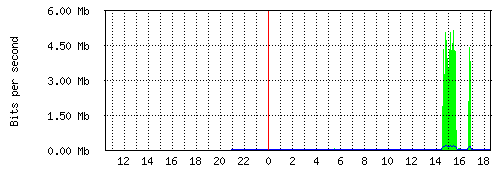Blueprint of IKEA
Spot-on representation of every IKEA store's layout:
Spot-on representation of every IKEA store's layout:
SEASONS of NORWAY - A Time-Lapse Adventure from Rustad Media on Vimeo. (via)
The Cisco SMB SLM2008 Smart Switch does normally not support SNMP and there is also no setting in the configuration interface which would enable SNMP.
But nevertheless the firmware does actually contain a SNMP daemon. Thus it is not surprising that a smart guy on to the Cisco support forum found out how to manipulate the proprietary config file such that it enables the SNMP daemon:
# perl enable_snmp.pl <IP of your switch>As this is a non-official hack, there are some limitations:
The Cyborgs is a two man 'elektrock' boogie band.
Thank you Sat Rocks for showing me their music :-)
Today I did some cleanup of my legacy infrastructure. The repositories formerly located at cvs.x-way.org and svn.x-way.org have been converted to Git and are now available at git.x-way.org.
Also is git.x-way.org now no longer served by the old gitweb.cgi but by the fantastic GitBucket (a lightweight, self-contained GitHub clone written in Scala).
Since last week Netflix is also available in Switzerland. The future has arrived one could say.
Not only gives this easy access to TV shows and movies but also is this access provided via IPv6.
As you can see on the graph below, this brings IPv6 out of slumber and into primetime :-)
Swiss providers are probably seeing quite an increase in IPv6 traffic this month.

The about page now features some fancy blog statistics, check it out :-)
The statistics are created with the help of Cal-Heatmap which allows to easily create calendar heatmaps similar to the activity heatmap of GitHub.
Update: couldn't stop playing around and thus added another chart, this time with the help of C3.js (a D3.js based reusable chart library).
SPA901 and SPA3102 phones can be rebooted by calling the following URL (which triggers an automatic config resync after the reboot):
http://<PHONEIP>/admin/reboot
The current configuration of an SPA901 phone can be downloaded like this:
http://<PHONEIP>/admin/spacfg.xml
For SPA3102 devices the URL is different:
http://<PHONEIP>/admin/config.xml